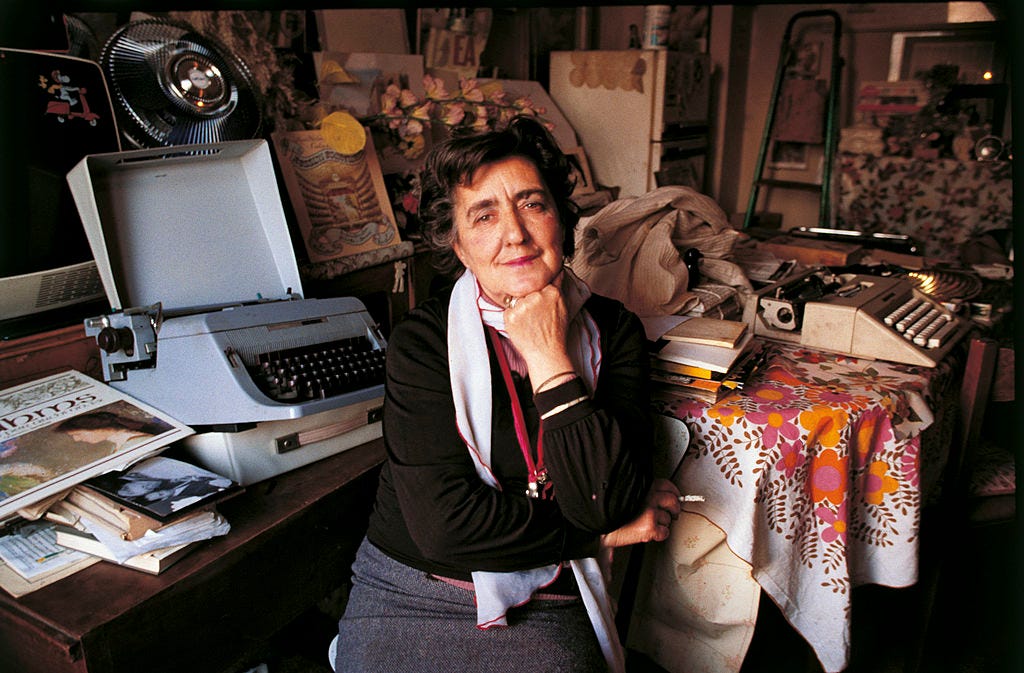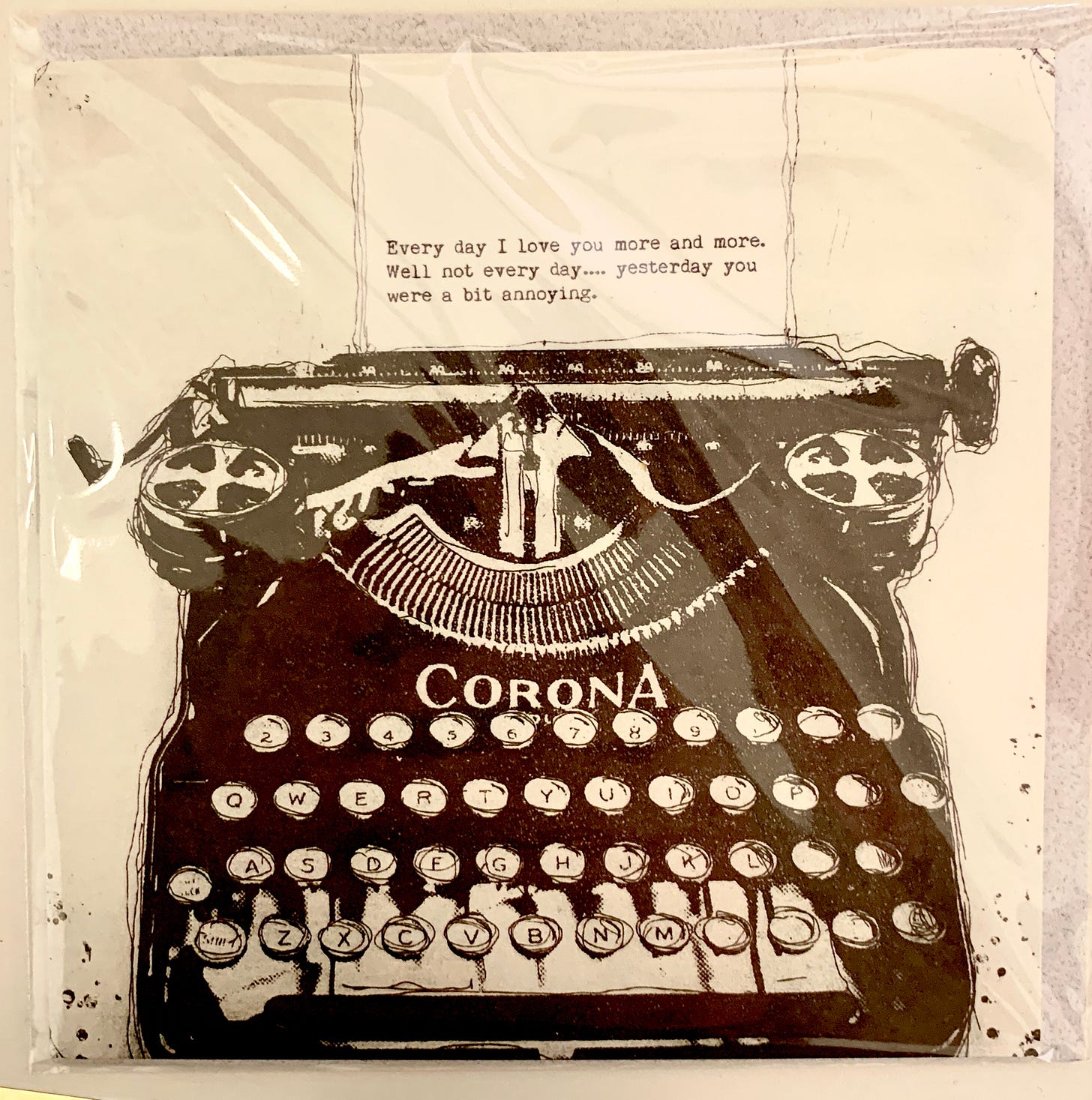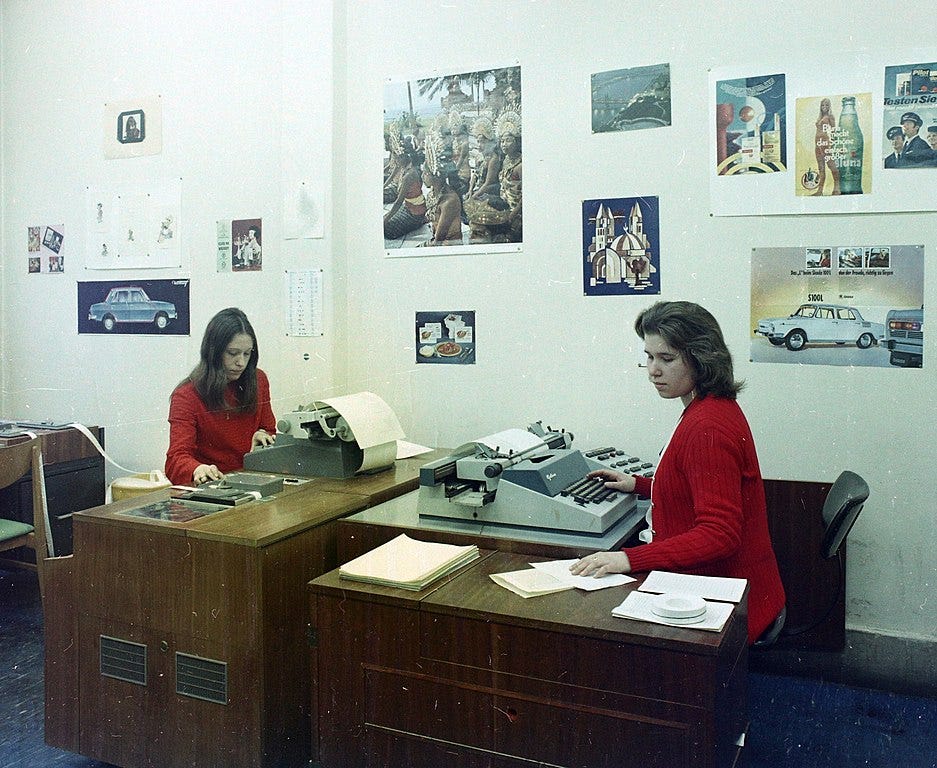TypeTown #37: “I don’t understand the process of imagination.”
📁 Joseph Heller, Alda Merini, Damon Runyon, and more...
How to spend the weekend in a country overdosing on the silliness of giving an ageing man a new hat?
Embrace the daftness and silence your inner scepticism? Or quietly express your doubts and risk pariah status?
Welcome to the UK and 72 hours of social conundrums.
It’s not, in the strictest definition of the phrase, a Catch-22 situation.
But it’s not far off.
So this week’s TypeTown opener — a crash through the career of Joseph Heller, author of said literary classic — feels somewhat apt.
Born in Coney Island in 1923, he learned his craft as an advertising copywriter.
Then, aged 30, the opening line of Catch-22 arrived fully formed and with little warning.
“I don’t understand the process of imagination.”
In a frenzied effort, he produced the entire opening chapter on the same day — first in longhand, and later on his green Smith-Corona.
Then he spent months plotting out every twist, turn, and character arc. “One year later, after much planning,” he said, “I began Chapter Two.”
Inspired by his own experience of flying 60 combat missions on the Italian Front, the work is a satirical examination of war, tragedy, farce, and paradox.
It is frequently listed as one of the greatest novels of the 20th century.
“When I read something saying I’ve not done anything as good as Catch-22, I’m tempted to reply, ‘Who has?’”
It took another 13 years until his next novel was published. He died in 1999 with just six to his name. A seventh, Portrait of an Artist, as an Old Man, was published the following year.
“I’ve only had four ideas for a novel in my life, and I’ve written all of them.”
A decade ago, the machine on which Heller wrote Catch-22 was publicly displayed at a University of South Carolina campus library. We are unsure if it is still there.
READ» Joseph Heller’s Handwritten Outline for Catch-22, One of the Great Novels of the 20th Century - Open Culture
READ» Joseph Heller, The Art of Fiction No. 51 - The Paris Review
READ» Joseph Heller’s Writing Routine: “I feel that these ideas are floating around in the air and they pick me to settle upon.” - Famous Writing Routines
TypeTown is free — and always will be. But it’s not cheap, in time or effort. If you have the capacity, please consider buying us a coffee.
Magnificent in Milan
To Italy next, where the voice of poet and writer Alda Merini still echoes through the country’s soul.
Merini died in 2009 aged 78. Her life had not been without incident.
She endured the sudden death of her first husband, the constant battle of raising four daughters from the proceeds of her poetry, and almost two decades of being institutionalised with mental health challenges.
Twice a Nobel Prize nominee, her work combines passion and humanity; anguish and love.
“I am not a woman who can be domesticated.”
She is interred at the Cimitero Monumentale di Milano alongside some of Italy’s most prominent actors, politicians, writers, and artists.
READ» Great Italians of the Past: Alda Merini - We The Italians
READ» Overlooked No More: Alda Merini, Poet Who Wrote of Life’s Joys and Struggles - The New York Times
From one Manhattan to another
Finally, check out the hat on this fella.
A walking fashion cliche of the early 20th century, meet journalist and short story writer Damon Runyon.
Born in Manhattan, Kansas in 1880, he made his name in newspapers before turning his hand to fiction and lighting up the prohibition era with a cast of colourful characters and fast-paced plots almost exclusively told in the present tense.
Like many writers, he accompanied his early work with an equally devout commitment to booze.
Two of his stories, The Idyll of Miss Sarah Brown and Blood Pressure, formed the basis of Guys and Dolls.
In 1946, he succumbed to throat cancer. But he left his mark - quite literally. His ashes were scattered from a plane over New York’s Broadway.
Exit, stage right.
READ» Behind the Byline: Damon Runyon, More Than a Sportswriter - Library of Congress
READ» I wish more people would read ... Damon Runyon's short stories - The Guardian
Worth pausing the platen
📬 Giving Thanks for Hanks: How I ended up with one of Tom Hanks’ typewriters - Iron Fox Typewriters
📬 Inside the world of typewriters and the niche hold they have on the modern world - Cincinnati Enquirer
📬 Typewriter Fest sparks heightened creativity - The Appalachian
📬 Ditching the Typewriter: How the Laptop Changed Literature - WAER Public Media
And finally… typewriters in the wild
In this lobby card for 1941 movie Blonde Inspiration…
In this greetings card spotted at Manchester Art Gallery…
And in this 1972 image from the office of Hungarian engineers UVATERV…
Until next time
❤️ Enjoyed this?
✉️ Forward to a friend and suggest they might subscribe.
☕️ Say thanks with a coffee.
🗣 Anything else? Hit reply and say hello.










I’m always inspired when I read your stories, not only to write, but to TYPE.